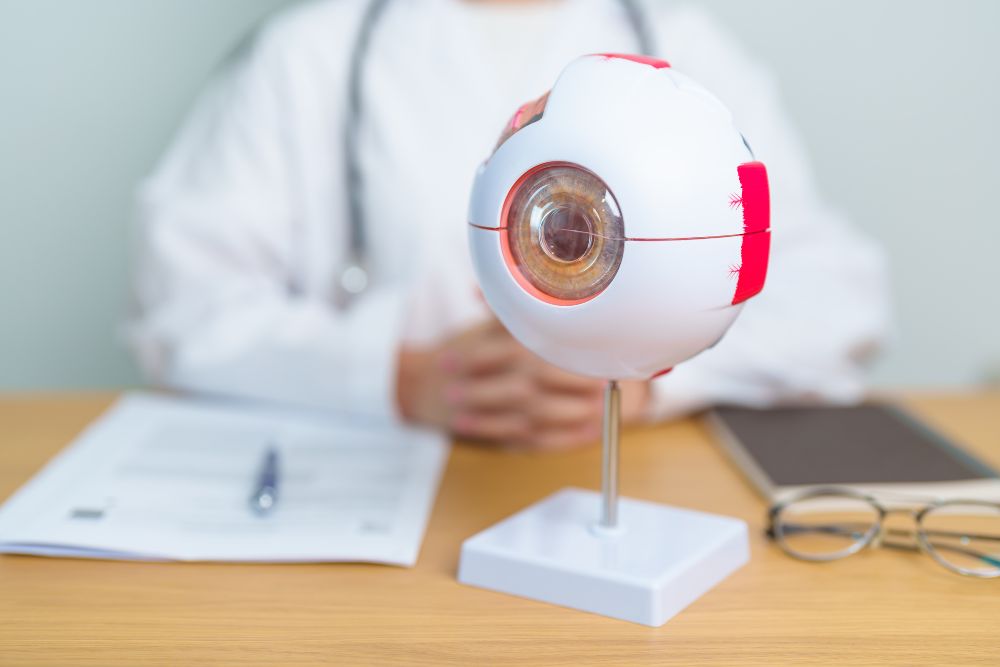Macula, Optic Nerve, and More: A Guided Tour of Key Retinal Structures

The retina is essential for vision, acting as a vital link between incoming light and the images we see. It consists of various anatomical parts that work together to help us recognize fine details, see objects to the side while looking straight ahead, and navigate in low-light conditions. These key parts of the retina include the macula, optic nerve, peripheral retina, and blood vessels.
Macula
The macula is the small but powerful part of the retina responsible for your central vision. It helps you read, recognize faces, and see fine details and colors. While the entire retina processes light, the macula provides the sharp, focused vision needed for daily tasks.
Macular conditions include:
- Age-related macular degeneration (AMD)
- Macular holes
- Macular pucker (also known as epiretinal membrane)
- Cystoid macular edema
Optic Nerve
The optic nerve sits at the back of each eye and contains millions of nerve fibers that transmit visual signals to the brain. Think of your eyes like cameras: the retina captures light, and the optic nerve functions as the cable sending the image to your brain for processing. Certain conditions can damage the optic nerve and impact vision, such as glaucoma, optic atrophy, poor circulation or reduced blood flow, and drusen, which are deposits composed of protein, calcium, and fatty compounds that accumulate in various areas near the back of the eyes.
Peripheral Retina
The peripheral retina is like the outer edges of a painting, providing context to the central masterpiece. It contains photoreceptor cells, specifically rods and cones, which detect light and transmit signals to the brain. This part of the retina is essential for peripheral vision, enabling us to see objects in our side and outer fields of view. Additionally, the peripheral retina plays a vital role in maintaining eye health by detecting and responding to environmental changes, such as fluctuations in light.
Several conditions can affect the peripheral retina, including:
Blood Vessels
The retinal blood vessels function like highways of a bustling city, transporting essential supplies of oxygen and nutrients to keep the retina running smoothly while removing waste products. Certain conditions can cause traffic jams that disrupt vision, including artery and vein occlusions and diabetic retinopathy.
Learn More From a Retina Specialist
The retina contains intricate structures that allow you to see and interpret the world around you. When something goes wrong and one or more of these parts of the retina can’t function properly, they can cause a wide range of retinal problems, ranging from blurred vision to potential permanent blindness. It’s important to see a retina specialist regularly to maintain the health of your retina and all the components that support its function.

